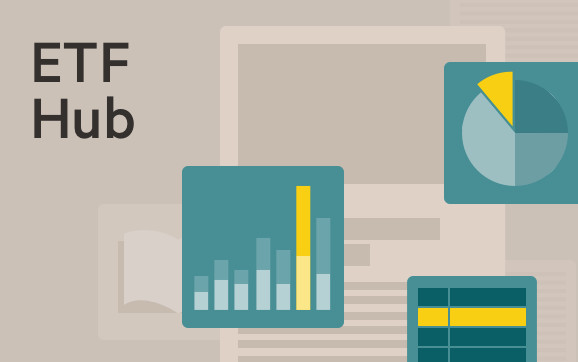$10bn pours into JPMorgan covered call ETF this year

Simply sign up to the Exchange traded funds myFT Digest -- delivered directly to your inbox.
Latest news on ETFs
Visit our ETF Hub to find out more and to explore our in-depth data and comparison tools
A bull market is traditionally accompanied by a wave of euphoria, with ever more investors getting sucked in as stocks march higher.
The current Wall Street variety — with the S&P 500 index up by more than 20 per cent from its October nadir — has been met with a wall of money rolling into one of the more defensive equity strategies: covered calls.
Such is the enthusiasm for this risk-averse strategy that the largest US-listed covered call exchange traded fund, the $26.8bn JPMorgan Equity Premium Income ETF (JEPI) has not only attracted the largest inflows of any actively managed ETF this year, but also become the largest active vehicle to boot.
“I’m shocked that we have gone from the meme stock boom to covered call strategies, it’s kind of like whiplash,” said Bryan Armour, director of passive strategies research, North America at Morningstar.
Now, rivals such as Goldman Sachs are lining up to launch their own “me-too” funds in an attempt to share in the bounty.
JEPI’s strategy involves selling “slightly” out-of-the-money S&P 500 call options, allowing the purchasers to buy the index at a set price and a fixed expiration date. If the index rises sufficiently for this option to be triggered, this caps upside returns for JEPI’s investors, meaning they may underperform the benchmark.
However, JEPI pockets the premium income from writing the options irrespective of what happens — cushioning investors if the options are triggered, or helping them outperform the index if they are not. Moreover, JEPI is designed to have a “defensive” equity portfolio, further reducing risk.
“Covered call strategies really started to gain traction with investors last year when there was more downside in the market . . . they were a way for investors to get above average income without taking on undue risk,” said Todd Rosenbluth, head of research at VettaFi, a consultancy.
“I’m slightly surprised that they have seen continued demand for the strategy in 2023, but I think there is a nervousness given how concentrated the market has been towards a handful of stocks, and covered call strategies offer a way to participate without necessarily owning the large growth stocks,” Rosenbluth added.
Bryon Lake, global head of ETF solutions at JPMorgan, believed JEPI took off last year because investors who use bonds to generate income “maybe didn’t want to take on duration risk” at a time of “very aggressive rate rises”.
This year it is benefiting from “continued uncertainty”. “What we are hearing from investors is they don’t necessarily trust this rally and they are a little bit sceptical that it’s going to continue,” said Lake, who also noted that JEPI now had a three-year track record, a milestone that some investors await before looking seriously at a fund.
Whatever the drivers, JEPI has had net inflows of $9.7bn this year, according to VettaFi’s data, a tally beaten by only two ETFs, both passive: Vanguard S&P 500 ETF (VOO) and iShares 20+ Year Treasury Bond ETF (TLT). In the process it has overtaken the $24.1bn JPMorgan Ultra-Short Income ETF (JPST) as the world’s largest active ETF.
Other covered call ETFs have also been popular, with the sister JPMorgan Nasdaq Equity Premium Income ETF (JEPQ), the second most popular active ETF this year, with $2.1bn of inflows, and Global X’s Nasdaq 100 Covered Call ETF (QYLD) up to $7.9bn of assets after $1.6bn of new money in the past year.
“It’s the category as a whole. There has been broad adoption,” Rosenbluth said. “Money is going into JEPQ and not QQQ [Invesco’s plain vanilla Nasdaq 100 ETF].”
Not everyone is a fan of the covered call concept, though.
“It’s a way to earn extra income when markets move sideways, but the challenge is the market timing element. Just because they are sideways today does not mean they will be sideways tomorrow,” said Armour.
The problem to him is that “markets tend to have extreme returns,” rather than exhibiting the classic bell curve normal distribution of returns.
“We see fat tails, there are larger drawdowns and bigger gains more often than we would expect from a normal distribution,” Armour said.
“[With a covered call strategy] you maintain exposure to the bad end of the fat tail. If the market tanks you will lose most of it, but you are giving up the good end of the fat tail, the upside. Giving up the upside over the long term is not a worthwhile endeavour,” he argued.
As an illustration QYLD, the longest-running of the products, has generated an annualised return of 7.1 per cent since inception in December 13, while QQQ has delivered 15.8 per cent over the same period.
Despite this, Lake maintained JEPI and JEPQ were long-term buy-and-hold products.
Latest news on ETFs

Visit the ETF Hub to find out more and to explore our in-depth data and comparison tools helping you to understand everything from performance to ESG ratings
“We are having fewer conversations around [returns] relative to benchmark and more conversations around what clients are trying to achieve,” he said, which may be “a good quality of life in retirement”.
Rivals are now after their share of the pie, principally Goldman Sachs, which has filed to launch US Equity Premium Income and US Tech Index Equity Premium Income ETFs, potentially mirror images of JEPI and JEPQ.
Armour was unconvinced Goldman would be able to elbow the incumbents aside. “I don’t see them coming in and taking significant market share from JPM,” he said. “There has been a divergence between JPM pushing hard into the ETF space and Goldman taking their foot off the pedal.”
Goldman declined to comment.
Lake was also relaxed about the competition. “Clients see us as a leader in this space,” he said.
“We hope we don’t get another 2022, but the fact we were able to show what JEPI did in that market is very valuable. The proof is in the pudding.”
Comments